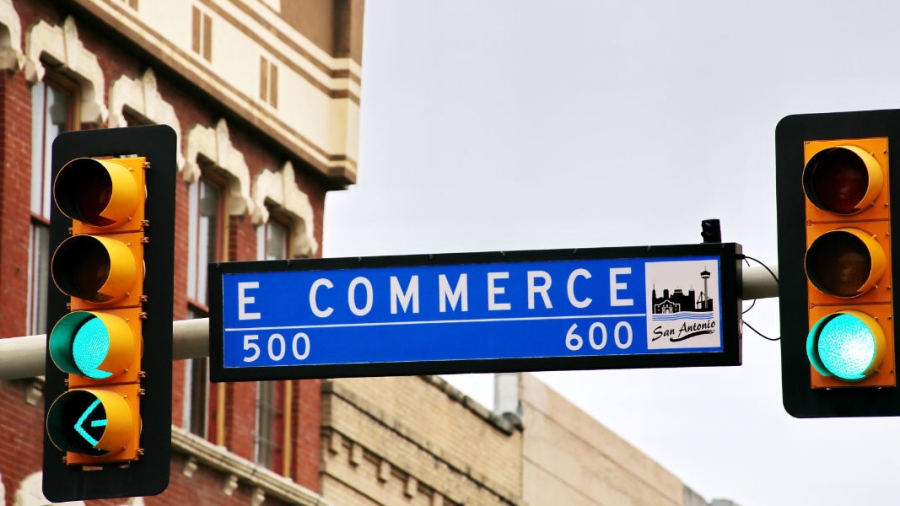The recent e-commerce explosion is increasing the value of the supply chain; thus, companies have been compelled to implement new techniques and tools to adapt to the omnichannel environment and remain competitive.
Keep in mind that in e-commerce, a sale isn’t considered as completed until the customer has the product in their hands. To accomplish this, the product must go through a supply chain that has very little time to respond and meet intermediate processes, like refunds, which require a reverse logistics process.
Let’s look at some trends that have been applied to the logistics of e-commerce, and have reshaped the industry as a whole.
E-commerce Response Time
Customers demand speed throughout the entire process. From online purchasing to delivery as well as in the customer service as a whole. Customers are often even willing to pay extra for faster delivery; therefore, companies must work hard beginning in the warehouse to meet Just in Time demands.
E-commerce Automation
New technologies have allowed for the simplification and reduction of some complex processes, and even eliminating others that are obsolete. For online stores, this has been of a great help because they typically have a small staff performing repetitive tasks like calculating shipment costs. Automated commerce, or a-commerce, is a system that lets us schedule, perform, and predict purchases according to recognized patterns.
Automation enables linking inventory with orders from the cloud (or any other file storage system), modify the status, and control them directly, as well as tweet them for visibility.
Some companies have followed other strategies, like automating systems to show clients the purchase amount needed to qualify for free shipping and implementing a-commerce tools that help customers schedule, perform, and predict their purchases.
The goal of a-commerce is to offer consumers a system through which they can purchase without thinking. It’s an evolution of traditional e-commerce where users can log into an online store in their PCs or mobile devices.
E-commerce lets users choose the products they need, add them to a cart, pay, and wait some days until the order arrives. A-commerce offers customers the chance to schedule purchases and even predict them based on their individual consumption patterns.
Big Data & Information Sources
SNEW is the acronym for social media, news, events and weather. This newly named concept encompasses important data sources we must consider when creating accurate demand forecasts.
Likewise, there are big data suppliers who gather and analyze the information of several sources to help companies make smarter and more informed decisions about their supply chains; examples include, planning delivery routes, providing traceability during delivery, and predicting purchasing behaviors.
Responsive Websites
Customers predominantly use cell phones and tablets for purchases. For that reason, companies need to adapt their websites to the screens and functions of mobile devices.
Drones
Drones can fly for 90 minutes and carry packages of up to nearly 3 kilograms. They’ve been used in pilot programs for the last mile, which is the portion between the courier and the consignee.
Augmented & Virtual Realities (AR/VR)
With these technologies, companies can show new products or tours to their customers using overlapped images and videos in 3D that simulate new and different experiences.
Chatbots
These programs are designed to talk to humans and have improved the customer service level because of their ability to immediately answer questions. Users increasingly prefer to interact with chatbots rather than sending e-mails that will be answered hours or maybe even days later.
Offer Delivery Options
Today, customers want to decide when and where to get their orders. Generally, people want to receive their orders as soon as possible. But, sometimes they want to choose the time and place when and where their order is delivered, an excellent example would be ordering from the online store with pickup at a brick-and-mortar store.
Brick-and-Mortar Is Still Important
For companies who have brick-and-mortar and online stores, it’s important to offer the same positive purchasing experience in all channels. Both webrooming (checking out products on the website before buying them in the brick-and-mortar store), and showrooming (buying a product online after checking it out at the brick-and-mortar store) are common practices of consumers.
Transparent Logistics Process
Customers seek transparency in their purchasing. They want to know who manufactures the product, the manufacturing process, who has been affected, who transported it, etc., and because of the Internet of Things, customers can have visibility of all these issues throughout the supply chain.
Optimized Payments
After companies learned they were losing sales because their online payment processes weren’t easy or quick, they’ve allowed customers to purchase without registering.
Alternative Payment Options
Most innovative sites offer diverse payment methods, such as cryptocurrency, digital wallets (devices or apps that enable e-transactions), systems that support transfers such as Paypal, or even cash.
Distribution Centers & Warehouses
o meet Just in Time demands, having just two or three distribution centers isn’t enough. Today, companies need to build or rent several small warehouses and stores near their customer bases.
Promotional Events
Creating new sales events like after-hours clearance sales, Cyber Monday, and holiday sales, any day becomes a good moment for customers to buy what they want. This forces companies to manufacture and transport goods faster, and to continue creating special online promotions.
Strategic Partnerships with Suppliers
Companies now consider suppliers as strategic partners, and they increasingly seek the help of logistics companies that share the mission of fulfilling the expectations of customers.
These are just some of the e-commerce trends that have driven the world’s leading companies. These trends will continue for years to come, and we suggest following them to satisfy the growing demands of customers and to remain competitive.
Using technologies like those we’ve described here allows us to analyze the threats and opportunities of our supply chains so we can make precise decisions regarding the strategies of the omnichannel supply.
Meanwhile, specialized logistics companies like BGL keep on searching for, and applying, innovative, fast, and reliable tools and methods that contribute to the commercial goals of our clients.



